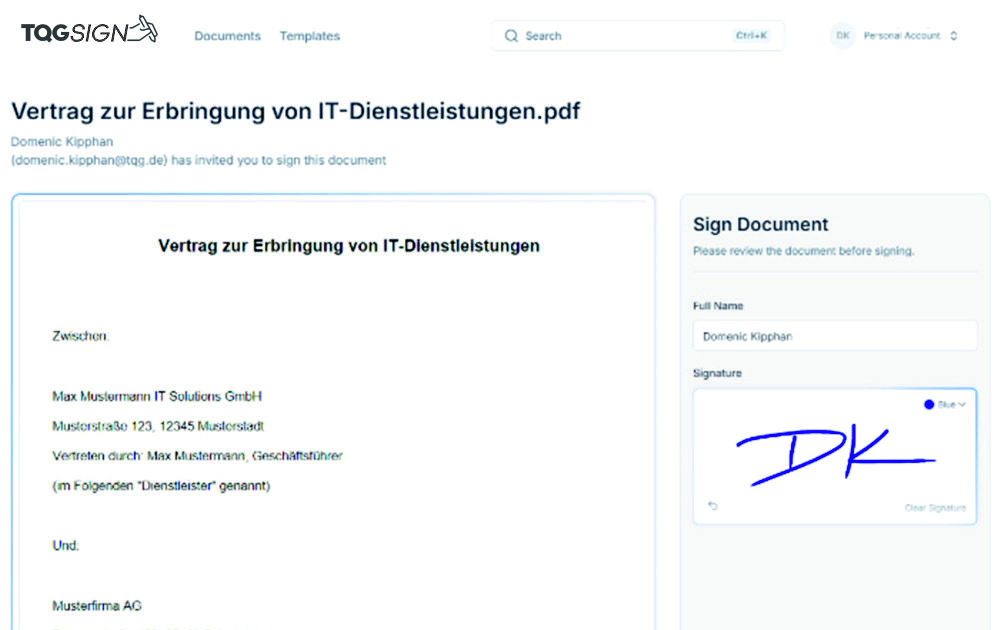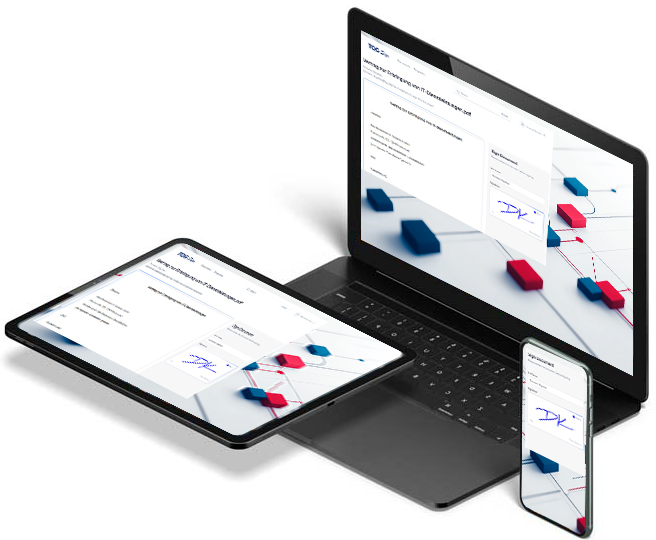TQG Sign is the solution for all your contract signing processes and can be fully integrated into the TQG businessApp cloud platform. We offer you TQG Sign as a managed cloud service. Benefit from end-to-end transmission security, automatic security updates and hosting in a German data centre.
TQG Sign at a glance
Speeds up the signing process
Legally compliant signing
Top price-performance ratio
Individually customisable to your needs

Main functions of TQG Sign
- Simple and binding signing of documents
- Signing sequence can be defined
- Automatic dispatch of the signing request
- Template management for the accelerated creation of new signature processes
- Signatures for employees in your own company and externally
- No media disruptions
- Optimized for desktop, tablet or mobile
The eSignature to support your compliance
- All processes and documents securely in one place
- Personal eSignature prevents subsequent manipulation
- Signed document including certificate saves directly in the contract management system
Video: Secure your compliance with the eSignature

A strong team - TQG Sign and TQG businessApp
The integration of TQG Sign into the TQG businessApp cloud platform offers you significant advantages:
- Direct start in smartLCM
- Seamless transition when processing and sending the signature request between TQG Sign and smartLCM
- Automatic placement of signature fields through document templates
- During the signature process
- Status tracking directly in the smartLCM document
- Process control for signature requests can be easily used via link
- After the signature process has been completed
- No media discontinuity: the signed document is automatically saved as a new version in smartLCM
- Logging: A signature protocol (Certificate of Completion) is automatically created and stored in smartLCM in an audit-proof manner
FAQs on the eSignature
What is an electronic signature?
Types of electronic signature
Difference between digital signature and electronic signature
Use cases of the electronic signature
Selection criteria for the right software solution with eSignature
Connection of external eSignature solutions such as Adobe Sign and DocuSign
